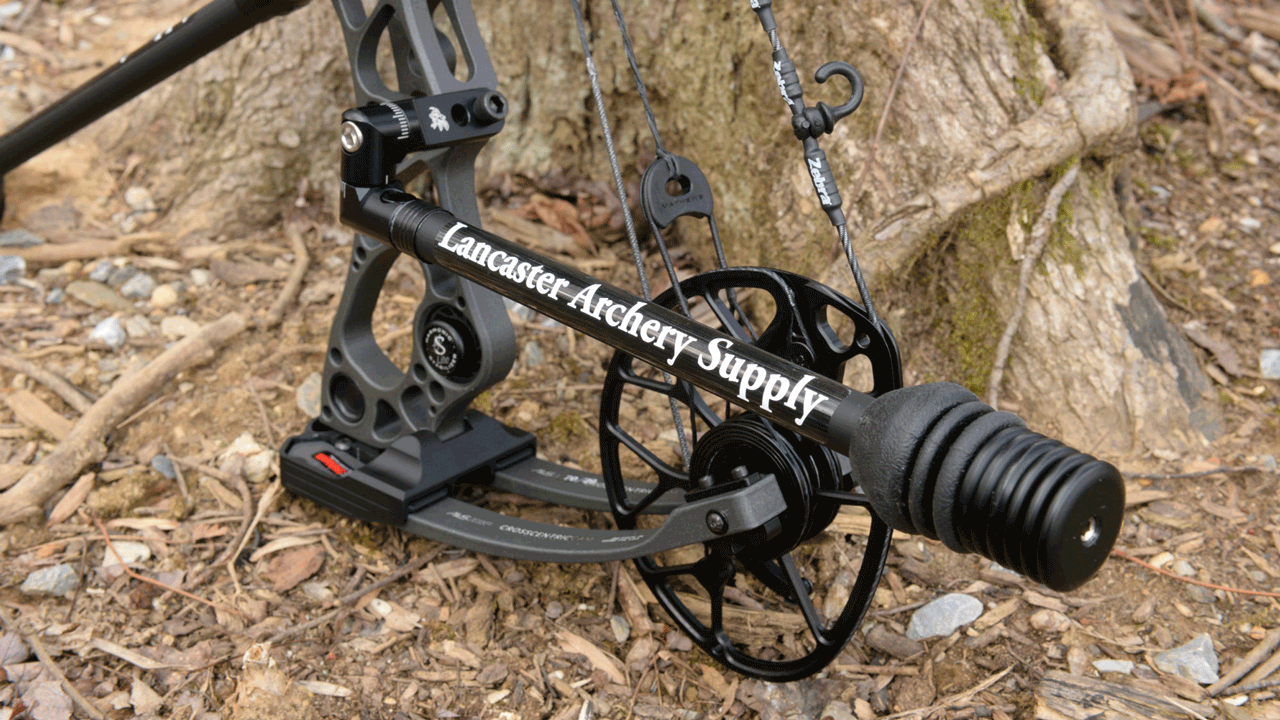Keep Steady: Exploring the Advantages of Compound Bow Stabilizers
Wiki Article
Optimizing Your Archery Efficiency With the Right Substance Bow Stabilizer: a Comprehensive Overview
In the world of precision, archery and consistency are paramount to accomplishing ideal efficiency. One often-overlooked yet important component in improving precision is the substance bow stabilizer. This plain device plays a significant duty in steadying your aim, minimizing bow torque, and absorbing vibrations. The effectiveness of a stabilizer hinges on various aspects, including positioning, weight, and style. By understanding the subtleties of selecting and optimizing a compound bow stabilizer, archers can fine-tune their devices to boost their shooting experience to new levels of effectiveness and control.Significance of Bow Stabilizers in Archery

Furthermore, bow stabilizers aid in balancing the weight circulation of the bow, which can enhance the archer's security while shooting and intending. By adding weight to the front of the bow, stabilizers can minimize the quantity of torque experienced upon release, causing a smoother and extra controlled shot - compound bow stabilizer. This weight circulation additionally helps in holding the bow constant for a longer period, allowing the archer to intend more precisely
Kinds of Substance Bow Stabilizers
When considering the various types of compound bow stabilizers available, it is essential to understand their unique features and functions to identify the most suitable alternative for optimizing archery efficiency. The most typical kinds of substance bow stabilizers include sidebar stabilizers, front stabilizers, and back stabilizers. Back stabilizers, likewise called back stabilizers, are placed to the back of the bow and assist in counterbalancing the weight of various other accessories, resulting in enhanced stability and constant aiming.Variables to Think About When Picking
In reviewing substance bow stabilizers, understanding the distinct features and functions of each kind is important for making an educated choice on one of the most ideal alternative to boost archery performance. When picking a stabilizer, one have to think about the weight of the stabilizer itself. While a heavier stabilizer can provide more stability by lowering the bow's motion, it may likewise trigger tiredness during lengthy shooting sessions. Balance is one more essential element to contemplate. The stabilizer's Click Here size and layout dramatically click here to read impact the bow's balance, influencing the shooter's capacity to hold stable aim. In addition, the material of the stabilizer can affect its efficiency. Carbon fiber stabilizers are light-weight and soak up resonances well, improving accuracy. Moreover, the number and adjustability of dampeners on the stabilizer can fine-tune its performance by reducing noise and shock upon launch. By carefully evaluating these factors, archers can select a compound bow stabilizer that straightens with their shooting style and maximizes their total efficiency on the archery variety.
Installation and Change Tips
For optimum efficiency and precision in archery, understanding the installation and modification of your bow stabilizer is essential. Appropriate installation begins with attaching the stabilizer to the bow's riser, ensuring it is strongly secured.When adjusting the stabilizer, begin with tiny step-by-step changes rather than extreme adjustments. Pay interest to just how the bow responds to adjustments in stabilizer settings and make changes as necessary. Regularly check the stabilizer's rigidity and overall problem to Visit This Link guarantee it continues to work ideally.
Upkeep and Treatment Standards

When not in usage,It is also essential to keep your bow with the stabilizer in a protected and secure area. compound bow stabilizer. Avoid leaving it in extreme temperature levels or revealed to route sunshine for prolonged periods, as this can cause damage to the stabilizer. Periodically check the stabilizer's positioning to ensure it is still effectively positioned on your bow. Complying with these upkeep and treatment standards will certainly aid you get one of the most out of your bow stabilizer and improve your overall archery performance.
Conclusion
To conclude, picking the appropriate substance bow stabilizer is crucial for making best use of archery performance. Understanding the significance, types, factors to consider, setup and modification pointers, in addition to maintenance and care guidelines can greatly influence one's precision and uniformity in capturing. By selecting a stabilizer that suits private needs and preferences, archers can boost their general performance and achieve much better outcomes on the array or in competition.Bow stabilizers play a critical role in enhancing an archer's accuracy and consistency by lowering resonances and maintaining the bow throughout the launch of an arrow - compound bow stabilizer.Additionally, bow stabilizers help in balancing the weight distribution of the bow, which can improve the archer's stability while aiming and shooting. The most typical types of substance bow stabilizers include sidebar stabilizers, front stabilizers, and back stabilizers. Back stabilizers, also called rear stabilizers, are placed to the back of the bow and assist in counteracting the weight of various other accessories, resulting in boosted stability and stable aiming. When picking a stabilizer, one have to take into consideration the weight of the stabilizer itself
Report this wiki page